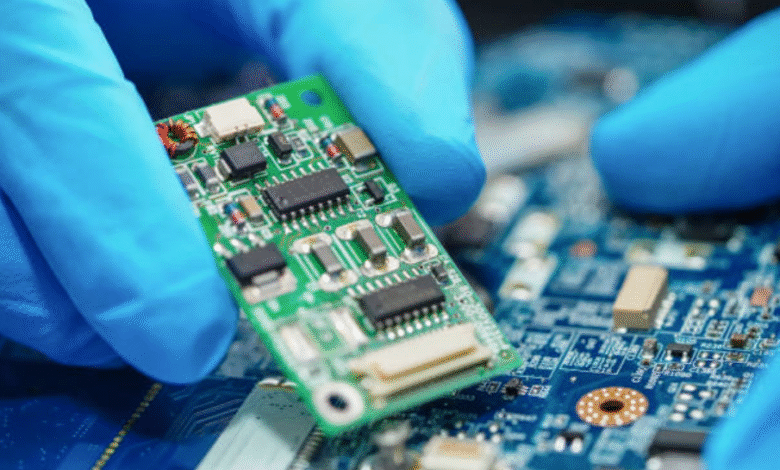How Do You Choose the Right Storage for Your Project Needs?

In today’s digital world, selecting the appropriate storage solution is a critical step in any hardware or software project. Whether you’re building servers, developing embedded systems, or creating consumer electronics, your choice of storage will impact performance, reliability, and long-term scalability. That’s why electronic storage sourcing plays such a vital role in project success. From solid-state drives (SSDs) to hard disk drives (HDDs), to flash memory and hybrid solutions, knowing how to evaluate your options is essential for meeting your technical requirements and budget constraints.
Understanding Project Requirements
The very first move is for the electronic storage sourcing to be effective. You should comprehend the requirements of your project. High-speed data access will be needed by the system, or is mass storage more important? For instance, gaming systems and video editing workstations demand faster reading/writing speeds, whereas archival systems may want more speed instead of capacity.
Various jobs are subject to different workloads and environmental conditions that will direct their storage choice. An industrial application, for example, may need a ruggedized hard drive with an endurance rating that can take a beating; through this, the enterprise environment can be assured of RAID-compatible devices that will create redundancy. By early defining these needs, you are helping your sourcing decisions and ensuring that your system’s architecture is compatible.
See also: Essential Video Editing Techniques for YouTube Creators
Types of Storage Devices
When planning your electronic storage sourcing, it’s important to choose the right type of device. SSDs offer fast performance with no moving parts, making them ideal for speed-sensitive applications. HDDs provide higher capacities at lower costs and are still commonly used for backups or bulk storage.
More targeted options, like NVMe drives, are not merely the combination of specs and give very fast data transfer through PCIe lanes. They are prevailing more and more in new systems. Conversely, embedded systems may need eMMC or microSD storage if they are to minimize the size and maximize the efficiency of energy consumption.
Each of these selections varies in speed benchmarks, endurance, and costs involved. Wrong choice of storage at the time could be a bottleneck to the system or an early disaster, especially in the case of working under excessive environmental conditions.
Performance and Endurance Ratings
Different devices can have different performance rates during the time when heavy loads are put on them. Several metrics: Input/output operations per second (IOPS), sequential read/write speed, and endurance (involving counting the terabytes written or TBW) are crucial while seeking electronic storage.
Frequent read/write operations, such as databases or media servers, benefit from high-performance storage. Additionally, endurance ratings are significant in sectors like industries where the drives face heavy write loads. A vendor who provides measurable performance parameters and durability benchmarks will enable you to make the right decisions tailored to your project specifics.
Compatibility and Form Factor
A second substantial factor is the form factor on the electronic storage supplying side. The drives come in various shapes and interfaces such as 2.5-inch SATA, M.2, U.2, and PCIe cards. Your motherboard or host device needs to be compatible with the selected interface; otherwise, performance or connectivity problems will arise.
Embedded systems or compact designs demand being aware of space limitations. In these instances, finding the right physical format and power efficiency is as significant as capacity and speed. Providers with a multitude of form factor offerings are the ones to guarantee you the customized configuration you need for special builds.
Data Security and Reliability
Features like encryption, secure erasure, and error correction codes (ECC) are generally not noticed, but are necessary in many business applications. Data integrity and protection are vital for financial systems, healthcare devices, and any field use which uses sensitive information.
A dependable electronic storage sourcing method involves the buying process of secure storage solutions that fulfill compliance standards such as the TCG Opal, FIPS, or HIPAA requirements. Also, the products should come with features such as “data integrity” tools to avoid corruption or data loss.
Supplier Reputation and Quality Assurance
The right supplier is as critical as the right product. The recognized suppliers who are in the electronic storage sourcing scene will be the ones that deliver true parts, relevant technical documents, and comprehensive warranties. Many of them go a step further and offer life cycle management and end-of-life notifications, both of which are vitally important to long-term projects or manufacturing pipelines.
Ordering from a supplier who is on the same wavelength as you concerning the function of the end product guarantees that you are getting the right specifications, besides integration support and technical guidance during project execution.
Cost-Efficiency and Scalability
Leveraging cost is important; however, purchase decisions should be made on the basis of the value that is created instead of just the lowest price. In electronic storage sourcing, the sweet spot that applies combines performance, durability, and capacity without bending your wallet is where the real ROI lies.
If the project is assumed to grow over time, then collaborating with a provider that can be of aid in the future with a consistent range of products or upgrades is a preferable option. This way, there will be no later mismatches, and your project will be able to expand without making any drastic changes to the storage system.
Conclusion
Selecting the right storage solution requires a detailed understanding of your project’s performance, capacity, and environmental needs. Effective electronic storage sourcing goes beyond product selection—it involves evaluating technical specifications, durability, compatibility, and supplier reliability. By aligning your sourcing strategy with the demands of your application, you can ensure long-term performance, security, and cost-efficiency. The right storage isn’t just a component—it’s a foundation for your project’s success.





